Flamingos- are they owls or larks?
A February flamingo up-date. The cold weather means birds have been kept inside of late, and so they remain toasty warm inside of their houses. Whilst this may seem unfortunate, in that the birds are not out and about in their enclosures, from a scientific perspective, it can give us the opportunity to delve deeper into the heart of the flock and see what is going on.
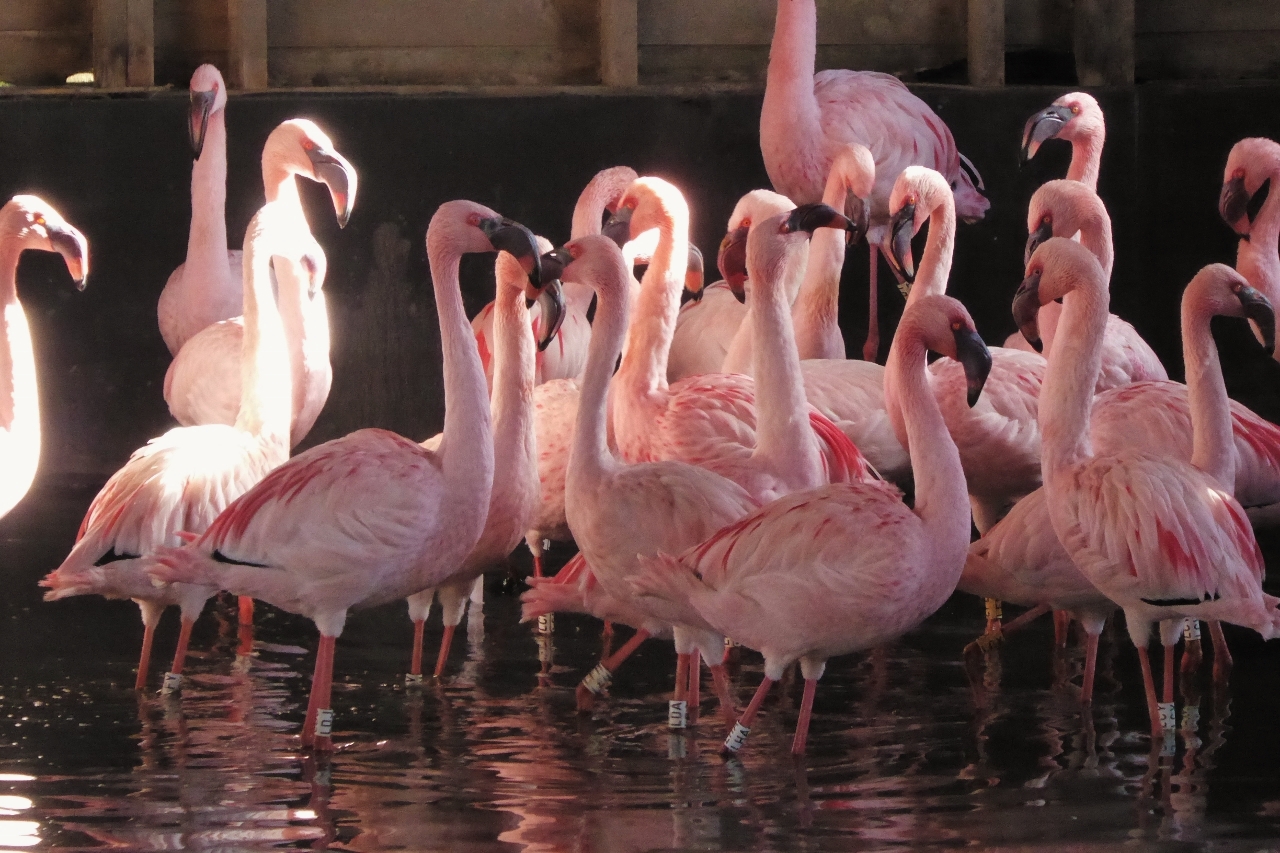 Some gorgeous shades of pink adorn the lesser flamingo flock of late. You can get some great views of the birds' different colours whilst they are inside.
Some gorgeous shades of pink adorn the lesser flamingo flock of late. You can get some great views of the birds' different colours whilst they are inside.
Back in 2016, we placed night vision cameras around the edges of Flamingo Lagoon so that the behaviour of the greater flamingos could be monitored across a 24-hour time scale. This was a really successful project, and the findings from this have been analysed and written up for a scientific publication. Watch this space for more information and I will impart when it’s been published!
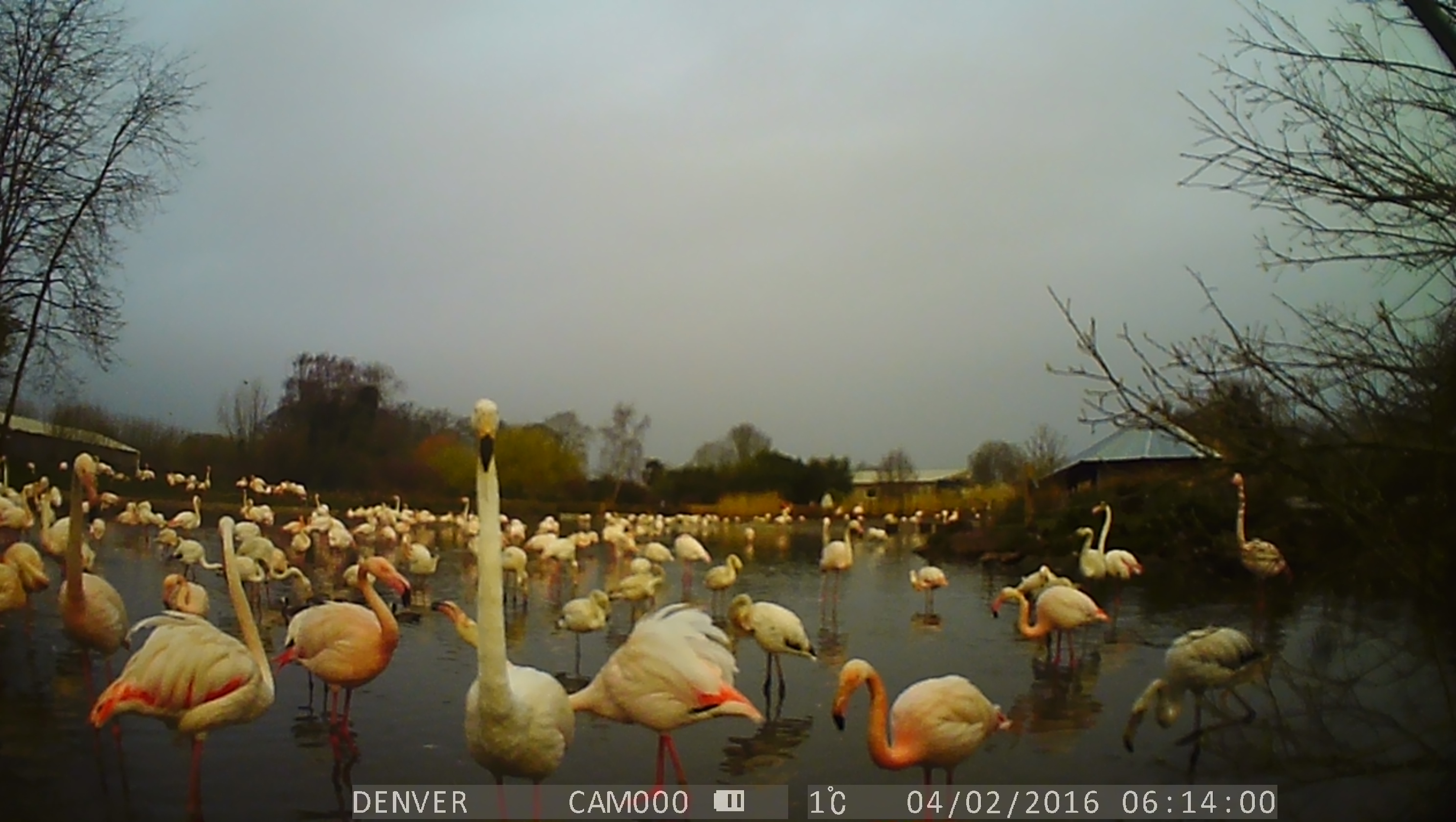 "Is this my good side?" A greater flamingo stares directly into one of the remote cameras set up to record their behaviour over-night in Flamingo Lagoon. Birds really do have a 24-hour activity pattern.
"Is this my good side?" A greater flamingo stares directly into one of the remote cameras set up to record their behaviour over-night in Flamingo Lagoon. Birds really do have a 24-hour activity pattern.
This year we have decided to look at the lesser flamingo flock. These birds hold a special place in the hearts of the Slimbridge aviculturists and as such it’s nice to be able to do research on them that might give the folks who look after them more of an understanding of their needs and requirements.
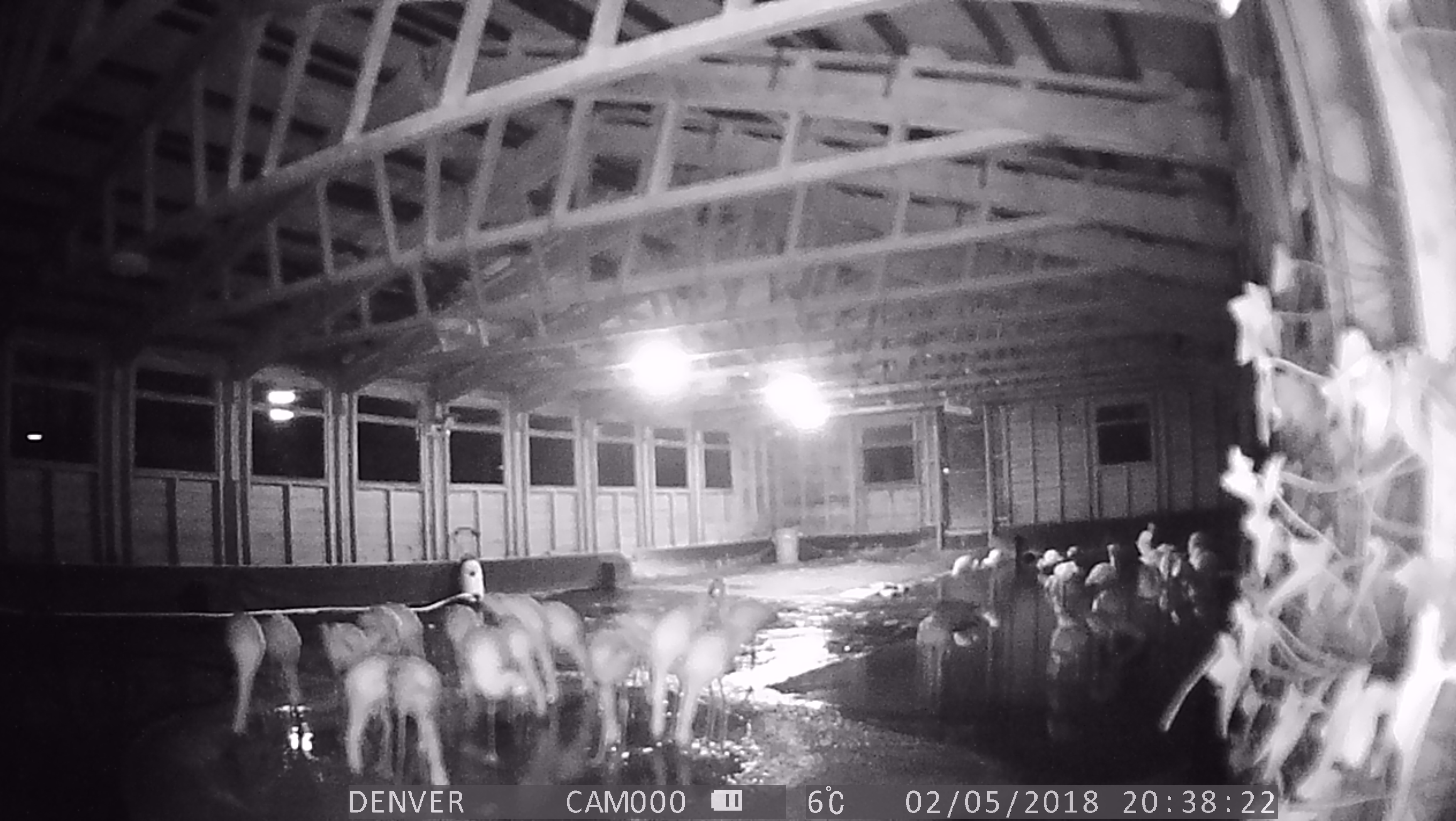 An example from the night vision footage from the lesser flamingo house. These snapshots tell us interesting and exciting information on the nocturnal goings-on of the WWT Slimbridge flamingos.
An example from the night vision footage from the lesser flamingo house. These snapshots tell us interesting and exciting information on the nocturnal goings-on of the WWT Slimbridge flamingos.
As I have mentioned before, the flamingo houses at WWT Slimbridge are nice and roomy. So, when the birds are inside they aren’t suffering from being cramped. Therefore, we can still get a good idea of their normal, natural behaviour even when they are inside their houses.
Several tweaks to the management of the lesser flamingos have taken place over the past few years, with changes to their feeding style being most obvious. The birds have a wide, shallow pool within which they can forage and filter feed for many hours. Phil and Sparky let the birds forage by placing piles of flamingo pellet into their feeding pool, and trickling water from a hosepipe over them so that the pellet breaks down slowly and the birds can spread out and filter for their dinner. Giving the birds a long time to eat their dinner helps them to behave in a similar way to a wild flamingo- and this is good for their well-being.
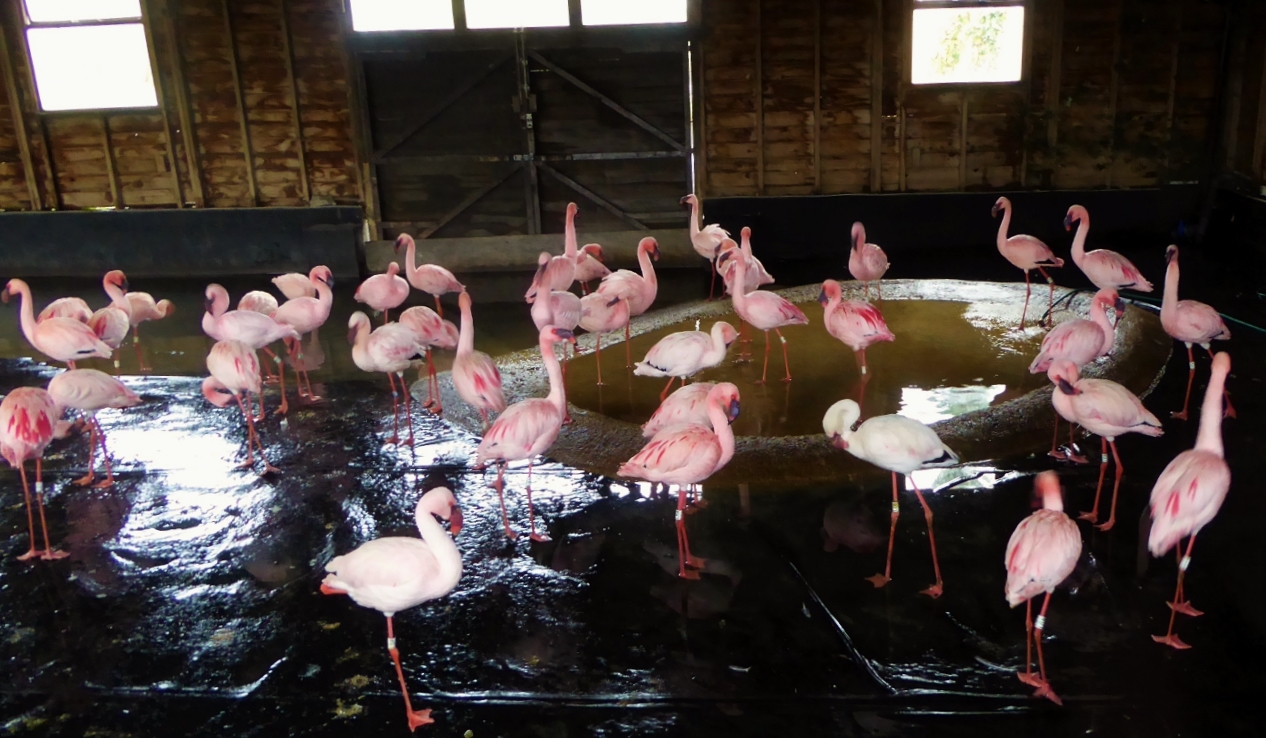 A wide, shallow feeding bowl allows lots of birds to feed together without squabbles. The hosepipe on the right (green lines near the back of the picture) trickles water over the flamingo pellet, which gives the birds the chance to filter feed in the same way as wild flamingos would.
A wide, shallow feeding bowl allows lots of birds to feed together without squabbles. The hosepipe on the right (green lines near the back of the picture) trickles water over the flamingo pellet, which gives the birds the chance to filter feed in the same way as wild flamingos would.
Foraging activity is really important to flamingos because it takes up a large amount of their time. and consequently keeps them occupied. We have found that the greater flamingos didn’t go to sleep overnight, and that they were very active. Because of these findings from the greater flamingo flock, we wanted to see whether the lesser flamingos behaved in the same way. Are flamingos night owls or early morning larks?
An MSc Zoo Biology student of mine, Jess, is taking measurements of the flock’s behaviour from the photographs taken by the night vision camera that we have placed inside their house. This allows us to record important behaviours that occur throughout times when the birds would not be viewed by their keepers, or by Slimbridge visitors.
Wild flamingos can be difficult to study, and we don’t know a lot about their nocturnal activities. This makes flocks like those housed at WWT Slimbridge really important for scientific research into bird behaviour and bird biology. Our results so far suggest that flamingos are night owls and morning larks-in fact, they seem to do most of their snoozing at lunchtime! Find out later in the year what we have found out from this exciting new research project.
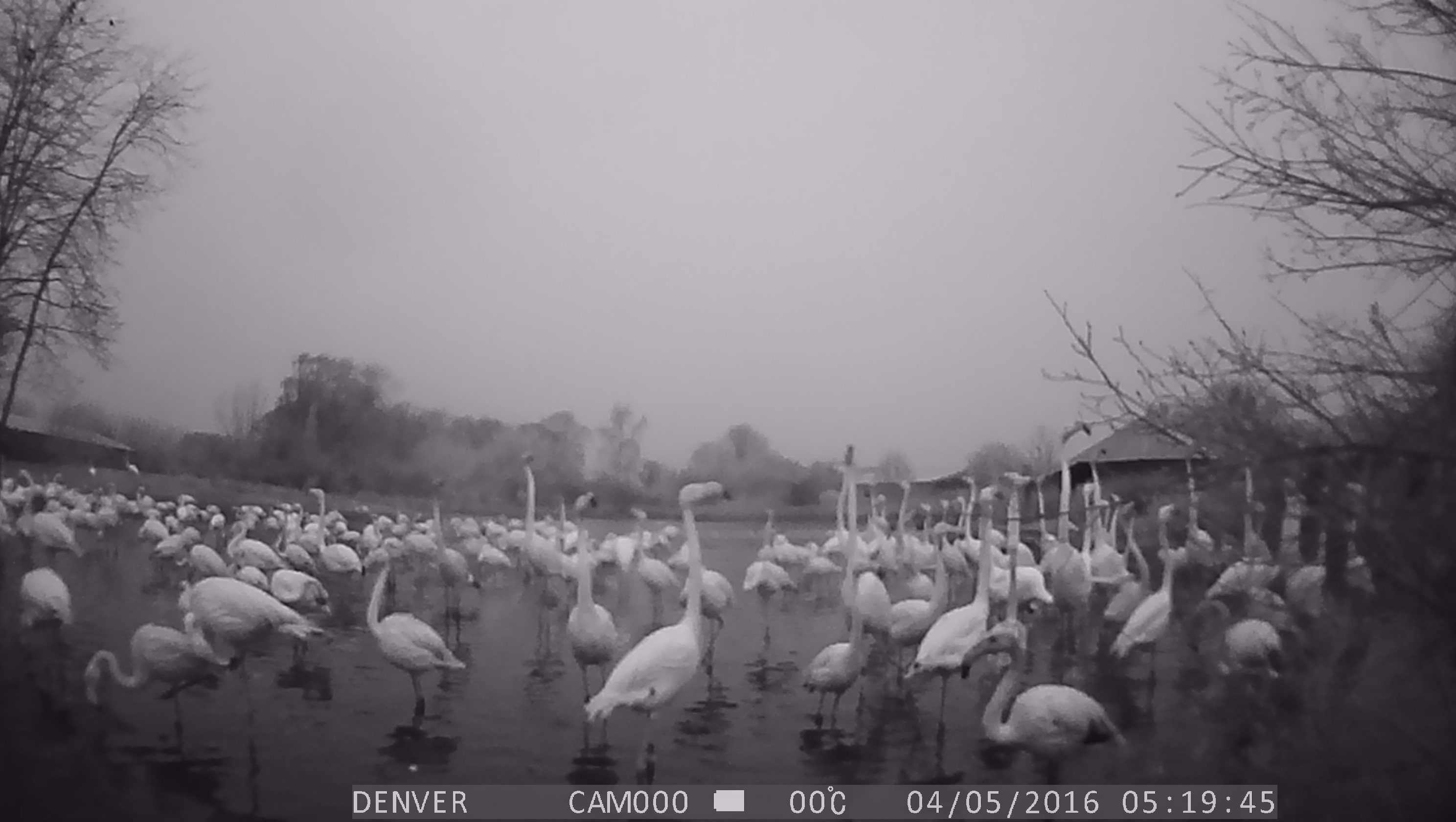 Dance, dance, dance! Even at 5am! Flamingos, it seems, never stop.
Dance, dance, dance! Even at 5am! Flamingos, it seems, never stop.



